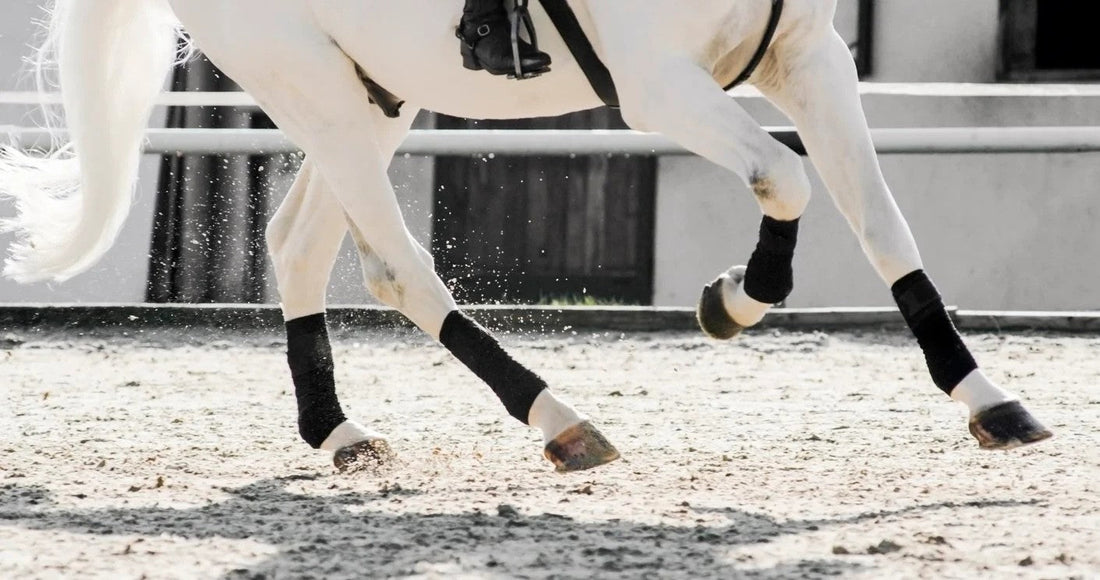
What is a locking stifle, and how does it impact the joint?
Share
The stifle, situated at the junction of the tibia and femur in a horse, can be likened to our knees. When lifting a horse's hind leg, the joint bends forward, similar to the movement of our knees when ascending stairs.
Through evolutionary adaptations, horses developed a locking mechanism in the stifle, allowing them to stand while sleeping with minimal muscular effort. However, this mechanism can lead to issues if the involved ligament fails to unlock spontaneously or locks at inappropriate times, resulting in a condition known as a locking stifle or 'upward fixation of the patella' in veterinary terms.
What are the potential causes, and which horses are more susceptible?
While the precise cause of locking stifles remains uncertain, conformation factors such as straight limbs and weak quadriceps muscles in the upper hind legs may contribute. Stifle is common in rapidly growing young horses, where bone growth may slightly outpace muscular development, altering joint angles and affecting stifle function.
Additionally, horses in poor condition or experiencing sudden weight loss may be prone to this condition. Loss of muscle tone can cause slackening of the stifle ligament, making it more susceptible to catching on the femur and locking.
What are the initial signs, and what actions should you take?
A locked stifle is visibly apparent, with the hind leg appearing straight and stiff during extension. The horse may drag the toe of its hoof along the ground. Typically, the leg will unlock independently, but some horses may require assistance. Encouraging the horse to rein back helps slacken the ligament, unlocking the joint.
Distinguishing between a locking stifle and other hind leg conditions, such as stringhalt, is crucial. Stringhalt, a neurological disease, manifests as exaggerated, uncontrollable movements, unlike the distinctive features of a locking stifle.
Owners may mistake a locking stifle for a more severe injury, but it is generally not distressing for the horse. If concerns arise, consulting a veterinarian is advisable.
How can the issue be managed?
In young horses, the condition often resolves as they mature and develop fully. However, intervention may be necessary for older or poorly developed horses with persistent locking stifles. Targeted exercise programmes, hill walking, trotting, and varied surface work can strengthen hindquarter muscles, enhancing the ligament's tension and preventing catching.
Treating stifle issues with herbs
Herbs and herbal remedies provide a safe, non-toxic alternative for treating stifle problems.
Devil's Claw: Devil's Claw is known for its anti-inflammatory properties and effectiveness in alleviating joint pain.
- White Willow Bark: White willow bark contains salicin, a natural anti-inflammatory compound.
- Meadowsweet: Meadowsweet boasts anti-inflammatory and pain-relieving properties.
- Hawthorn: Hawthorn has mild anti-inflammatory effects.
- Nettle: Nettle is rich in minerals and has anti-inflammatory properties.
- Rosehips: Rich in vitamin C and antioxidants, rosehips contribute to joint health.
- Kelp: Kelp is a source of iodine and various minerals that support overall health, including joint health.
Free Mover Plus could be an answer.
It's important to note that individual responses to herbal treatments can vary. Always consult your vet before taking herbal supplements to ensure compatibility with other prescribed treatments.
When is surgery necessary, and what are the options?
Surgery may be required if exercise or supplements do not alleviate the condition and your animal's welfare is affected. Traditional approaches involve cutting the medial patella ligament, but modern techniques under local anaesthesia offer lower risk. These include injecting iodine to stiffen the ligament or inducing controlled trauma to promote scar tissue formation, reducing ligament elasticity. Your vet will determine the most suitable approach based on your horse's condition and needs.
